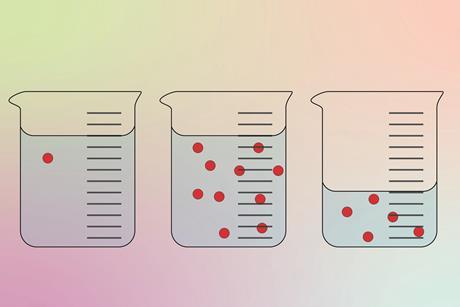Ways to teach formation of salts
Secure your learners’ understanding of this core topic with teacher-tested recall strategies and experiments
Sharing science stories
Tell a tale of a chemistry discovery (or disagreement!) to engage and inspire your students
Make revision active
Consolidate knowledge, encourage independent learning and help students self-assess with this activity
5 ways to teach excess and limiting reagents to 14–16 learners
Tips for helping learners get to grips with this tricky part of quantitative chemistry
Success with GUESS for solving equation-based problems
Help your 11–16 students calculate answers independently and effectively with this acronym
Education in Chemistry - Classroom articles
How to teach solubility at 14–16
Concentrate learners’ minds on the key aspects of solutions
Teaching atom economy, percentage yield and green chemistry post-16
Use these tips and ideas for teaching these quantitative topics
How to teach atomic structure at 14–16
Strengthen your students’ grasp of the atom and electronic configurations with these models and strategies
Make water ‘disappear’ with a superabsorbent polymer
Use just sodium polyacrylate, water and table salt to amaze learners and show how chemists modify materials for their purposes
Demonstrate electrochemistry with a gravity cell
Video, kit list and teaching tips to set up a one-beaker copper–zinc voltaic cell to explore redox reactions
Experiment with surface tension and convection currents
Use this demonstration when teaching concentration gradients, diffusion and convection at 11–16
How to teach condensation polymerisation
Everything you need to ensure post-16 learners understand condensation polymers
How to teach Earth’s atmospheric pollution
Get to the burning issues of climate change, acid rain and smog with this poster, fact sheet and activity for 11–14 learners
Research-informed tips for using dialogic teaching
Use extended periods of talk between students to improve the quality of their responses in chemistry
The 7 best practicals for teaching electrochemistry from 11–18
Use a sequential approach to reinforce learning and maximise student success
Use students' drawings to understand their thinking
How to develop your recognition and interpretation skills to better evaluate learners’ chemical representations
How metacognition improves student engagement and outcomes
Two strategies to improve learners’ thinking about thinking when solving chemistry problems
How PhET simulations help students with abstract concepts
Use digital resources to improve students’ chemistry learning outcomes
Celebrate curiosity, creativity and co-operation in your chemistry lessons
They’re key to learners identifying positively with chemistry and achieving success
Improve assessment accessibility for multilingual learners
Teaching tips to help you tackle four key language challenges EAL learners face in chemistry
Foster more diverse involvement in all science lessons
Understand the challenges faced by students with concealable or hidden characteristics to engage all your learners in classroom research























